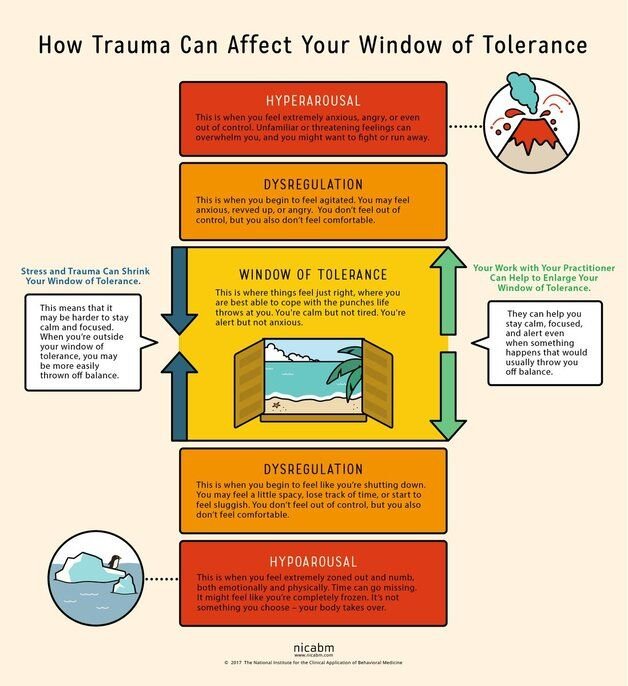Window of Tolerance: Mental Health Basics
Picture your favorite room in your favorite place in the world (real or imagined). Does this place have a window? If so, what do you see outside of that window? Maybe it’s huge forest trees towering into a big, blue sky. Maybe it’s a river flowing through grassy knolls, or a beach sweet and salty enough to always have a window open with the breeze blowing through.
Wherever it is, would you want that window to no longer be there? Of course not! That would keep you from seeing the beauty outside of your favorite place. Would you want that window to become a whole opening in your wall for anyone or anything to drift its way in? Probably not. Windows are enjoyable for what they are-a space to see without being overwhelmed by the elements of the outside.
In therapy, we also have a window called the Window of Tolerance. When many people first come to therapy, they have either an assumption that everything will be solved quickly, or a fear that they will have to delve into past wounds too deeply in the first session. These fears are completely valid and often keep people, who are otherwise wanting to participate in therapy, at a standstill. In recent years, though, researcher and clinical professor of Psychiatry, Dr. Dan Siegel, developed the idea of the Window of Tolerance, which is a sweet spot for the brain, in which it can handle information so as not to retreat into fight or flight.¹
When a person is outside of their Window of Tolerance, the brain moves into hyper-arousal or hypo-arousal. The person is triggered, and this can look like anxiety, depression, or coping through numbing or other unwanted behaviors. As a result, the body can shut down or go into panic mode. A person might be outside of their window of tolerance by being triggered by a huge event, such as a trauma happening in the present, or a person may be triggered by a seemingly small scenario (that can often be pointed back to larger events in the past).
In therapy, it is important to work with your therapist to maintain your window of tolerance. Your therapist can walk with you through coping skills, such as mindfulness or grounding, to help keep you in the present moment and within your window of tolerance. Working with your therapist to maintain and, if appropriate, slowly expand your window of tolerance can help you comfortably keep that “scenery” in its appropriate place.
If you want to learn more about our services and live in South Carolina, we can help. Click the button below to get started.
¹Siegel, D. (2015) The Developing Mind

